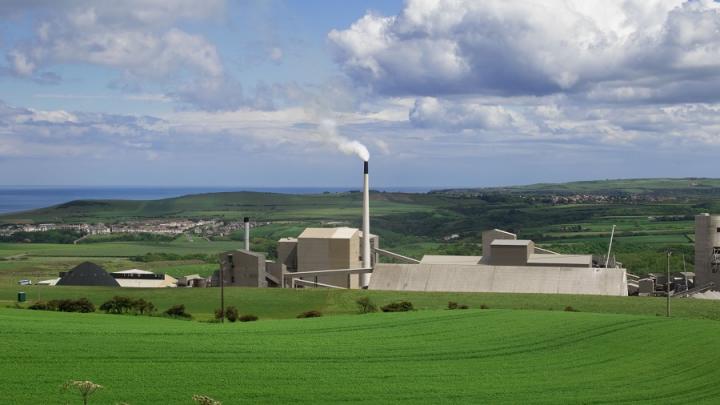Physicists play key role in nuclear project
A study of the Universe involving Edinburgh physicists could help to improve global security.

The UK government is investing nearly £10 million in a joint project with the US to harness existing particle physics research techniques to remotely monitor nuclear reactors.
Expected to be operational from 2022, the Advanced Instrumentation Testbed (AIT) project’s 6,500 tonne detector will measure the harmless sub-atomic particles called antineutrinos that are emitted by an existing nuclear power plant 25 kilometres away.
The project will test whether the technique could be scaled up in the future for more distant monitoring of nuclear sites, with the potential for non-proliferation applications.
Underground laboratory
The AIT detector is called WATCHMAN, an acronym for the WATer CHerenkov Monitor of ANtineutrinos. It will be constructed 1.1 kilometres underground at the ICL Boulby mine in North Yorkshire – the deepest operating mine in Europe.
AIT-WATCHMAN will be supported by the Boulby Underground Laboratory, an existing multidisciplinary deep underground science facility operated by the UK’s Science and Technology Facilities Council. The STFC Boulby Underground Laboratory already hosts a range of deep underground science studies from astrophysics (the search for Dark Matter in the Universe) to studies of geology, geophysics, climate, the environment, life in extreme in environments on Earth and beyond.
Fundamental particles
Abundant throughout the Universe, and created by our own Sun and other stars, neutrinos are among the most difficult fundamental particles to study, as they carry no electrical charge and rarely interact with ordinary matter. Studying the properties of neutrinos and antineutrinos is an important component of wider physics research into the origins of the Universe, especially the apparent imbalance between matter and antimatter.
The UK and US have a long history of scientific collaboration, especially in translating the techniques used for basic science to solve real world problems.
The ICL-Boulby site for AIT, with its proximity to an existing reactor complex, is the ideal location for our experiment.
UK expertise
Within the UK, physicists from the Universities of Edinburgh, Liverpool and Sheffield, have been working with national defence and security agencies, including the Atomic Weapons Establishment (AWE), on the AIT-WATCHMAN project.
Physicists from the University of Edinburgh will play a leading role in the construction of the detector, in particular they will lead the testing, installation and commissioning of over 4000 photomultiplier tubes which will be detecting the Cherenkov light flashes produced when neutrinos react in the 6,500 tonnes of water.
AIT-WATCHMAN is an exciting opportunity to apply our expertise in single photon detection to further non-proliferation. As a bonus, if a supernova explodes in our galaxy we will see the neutrinos from it and learn more about the physics processes in such events.
Applying fundamental science to real-world situations is an interesting challenge and we are excited to work with our international partners on this project.
US partners
In the US, the participating institutions are Lawrence Livermore National Laboratory, Lawrence Berkeley National Laboratory, Pacific Northwest National Laboratory, Los Alamos National Laboratory, Brookhaven National Laboratory, Boston University, Iowa State University, Middlebury Institute of International Studies, Pennsylvania State University, and the Universities of California (at Berkeley, Davis, and Irvine), Hawaii, Michigan, Pennsylvania, and Wisconsin.
UK funding is provided through the UK Research and Innovation (UKRI) Fund for International Collaboration, and the Ministry of Defence. US funding is provided through the Department of Energy’s (DOE) National Nuclear Security Administration (NNSA) and by the Office of High Energy Physics within the DOE Office of Science.
Related links
Study Physics and Astronomy at Edinburgh
Science and Technology Facilities Council (STFC)
Particle physics experiment group
Image credit: STFC Boulby Underground Laboratory

